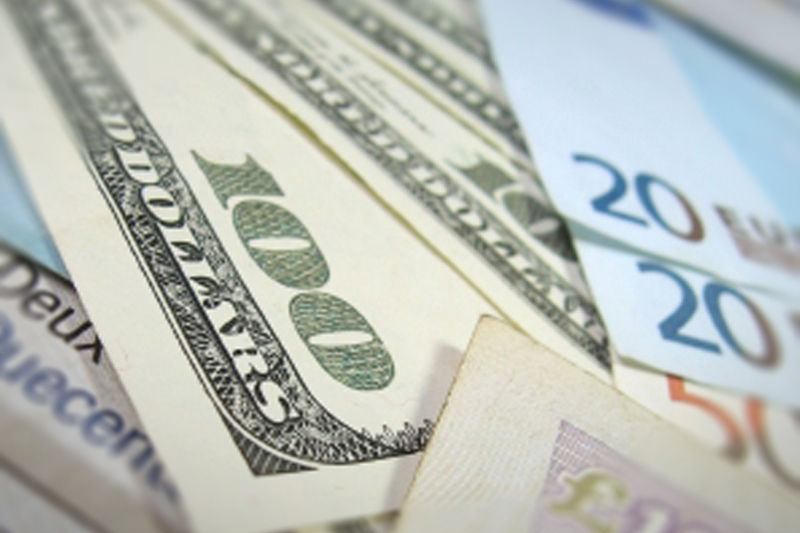Investing.com -- EUR/USD fell mildly on Wednesday halting a three-day winning streak, as currency traders reacted to a flurry of mixed data on both sides of the Atlantic.
The currency pair traded in a broad range between 1.0871 and 1.0958, before settling at 1.0910, down 0.0047 or 0.43% on the session. EUR/USD has been virtually flat since the Federal Reserve ended a seven-year zero interest rate policy last Wednesday when it approved its first rate hike in nearly a decade. During a volatile month of trading, the euro has gained more than 3.25% in value against is American counterpart.
EUR/USD likely gained support at 1.0538, the low from December 3 and was met with resistance at 1.1352, the high from Oct. 22.
The dollar held onto gains from the morning session amid a weak batch of data in the euro zone. In France, third quarter GDP was revised down by 0.1% to 1.1% annually, providing a harbinger of potential slowing economic growth in the final quarter of the year. The subdued reading was accompanied by downbeat data in the U.K. where GDP increased by 2.1% annually in the third quarter, decelerating from yearly growth of 2.3% in the previous quarter. It marked the worst third quarter in the U.K. since 2013.
In the U.S, the Department of Commerce's Bureau of Economic Analysis (BEA) said U.S. personal income ticked up by 0.3% in November, marking the eighth consecutive month that the figure moved higher. Analysts forecasted gains of 0.2% last month, following a robust increase of 0.4% in October. It came amid an acceleration in wages and salaries for government workers and an $11.6 billion bonus paid to United Auto Workers employees, one of the nation's largest unions.
As the labor market continues to tighten, nearing full employment, wages and salaries have also increased exponentially. In November, wages rose by 0.5% following gains of 0.6% a month earlier. The strong gains in personal income should support consumer spending and bolster economic growth over the next year. Consumer spending, which represents roughly two-thirds of U.S. economic activity, increased by 0.3% in November, after remaining flat a month earlier.
In terms of inflation, the Personal Consumption Expenditure (PCE) price index remained flat in November, below consensus expectations for a 0.1% gain. On a yearly basis, though, the PCE price index increased by 0.4%, above 0.2% annual gains. The Core PCE index, which strips out volatile food and energy prices, inched up by 0.1% last month, in line with consensus estimates. Over the last year, core prices are up 1.3%, unchanged from October's reading. Core PCE prices, the Fed's preferred gauge for inflation, have fallen below its targeted goal of 2% for every month over the last three years.
The relatively strong inflation data, however, could compel hawkish members of the Federal Open Market Committee (FOMC) to push for another rate hike during the first quarter of next year. In its December monetary policy outlook, the FOMC forecasted that its benchmark Federal Funds Rate could rise by 1.0% over the next 12 months to 1.5% by the end of 2016. On Wednesday, the CME Group's (O:CME) FedWatch placed the probability of a quarter-point hike in March at 53.6%.
The U.S. Dollar Index, which measures the strength of the greenback versus a basket of six other major currencies, rose by more than 0.45% to an intraday high of 98.66, before closing at 98.38. Earlier this month, the index eclipsed 100.00 to reach its highest level in more than 12 months.
